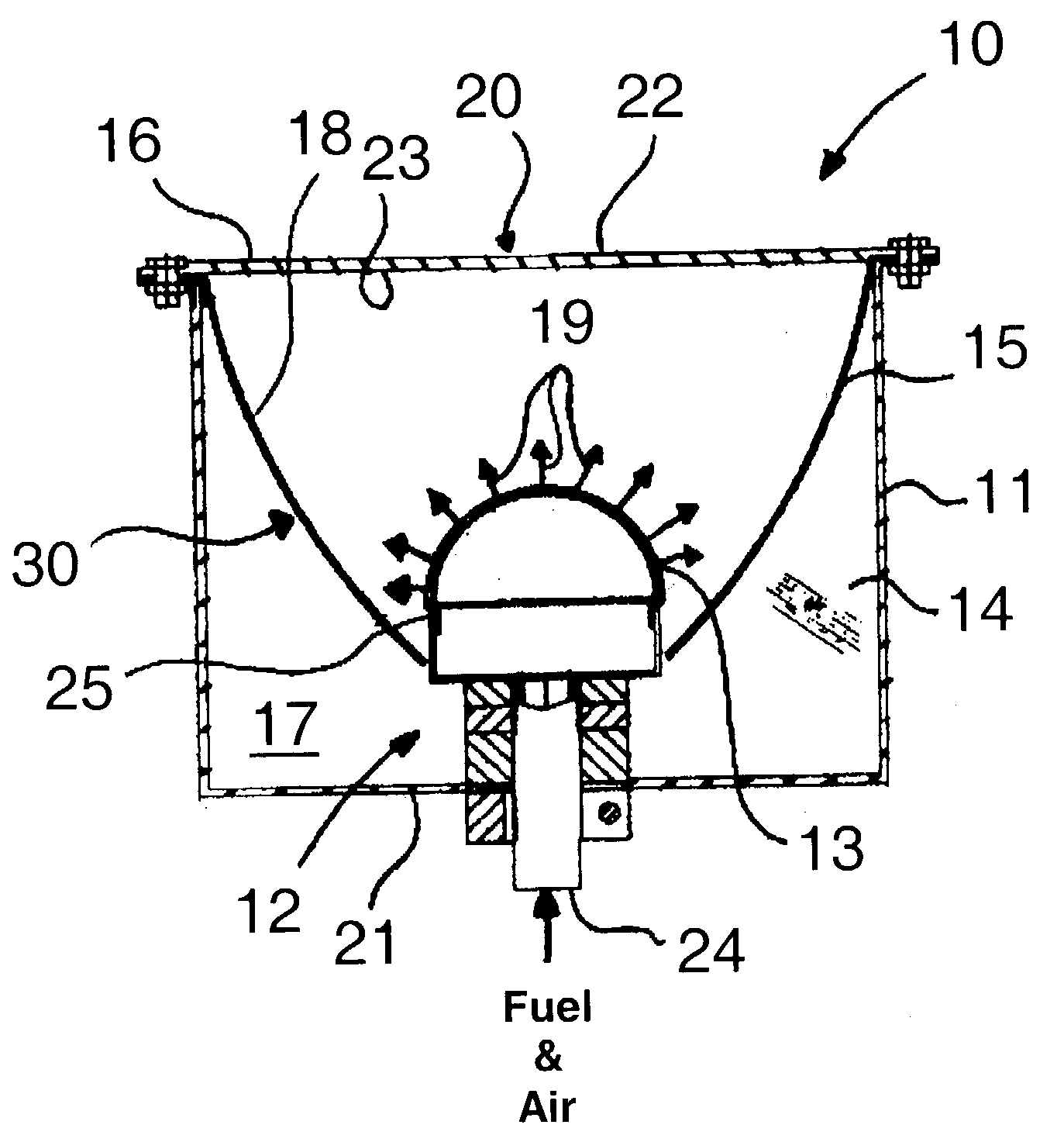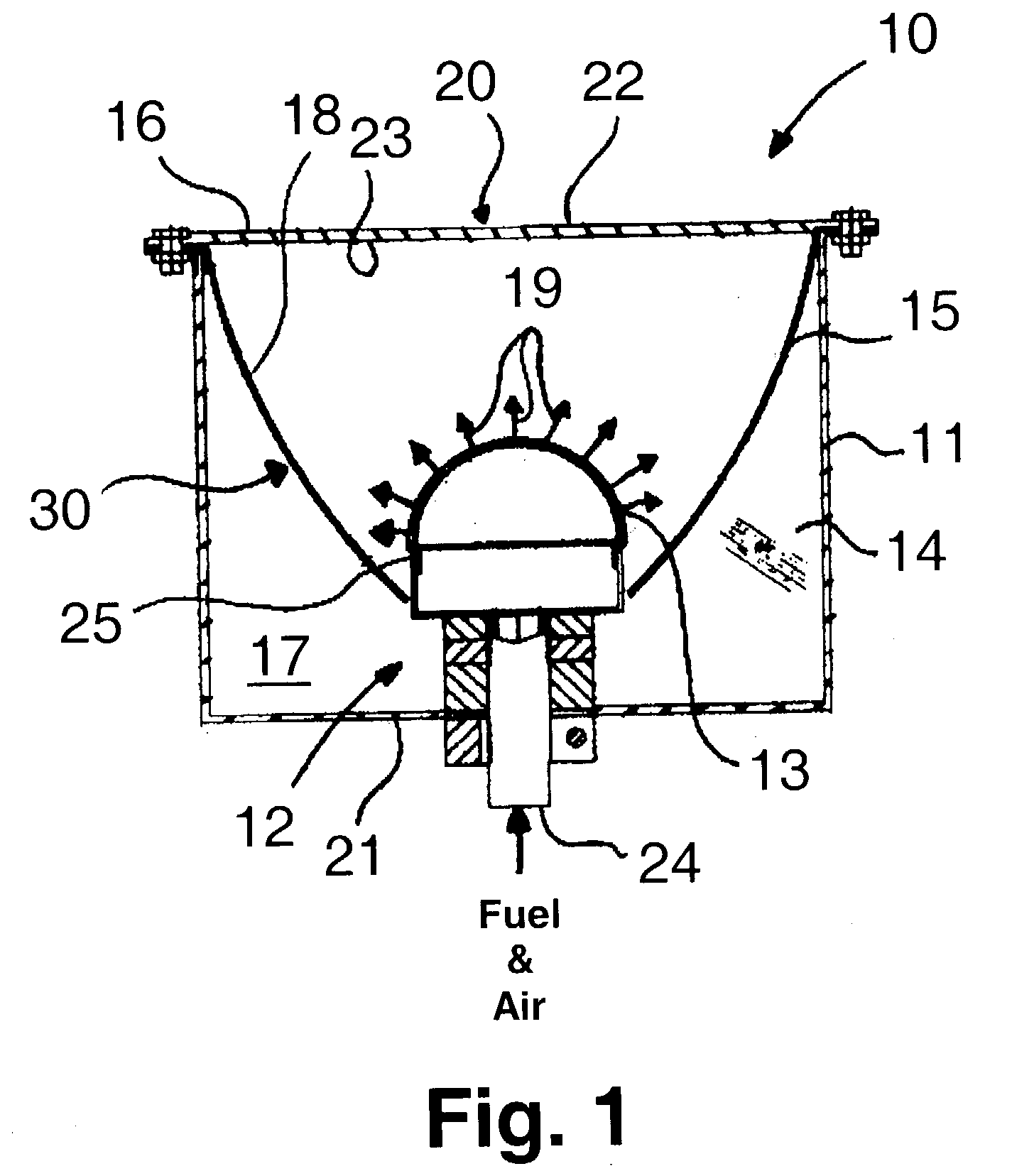Flame-less infrared heater
a flameless, infrared heater technology, applied in the direction of gaseous heating fuel, combustion type, stove or range, etc., can solve the problems of high cost of electric heaters, high cost of catalytic heaters, high concentration of unburned hydrocarbons and carbon monoxide,
- Summary
- Abstract
- Description
- Claims
- Application Information
AI Technical Summary
Benefits of technology
Problems solved by technology
Method used
Image
Examples
Embodiment Construction
[0019] The heating apparatus of this invention is fired with a gaseous hydrocarbon fuel, preferably natural gas, and produces radiant heat in the wavelength range of about 1 to 10 micrometers. The thermal and combustion characteristics are comparable to conventional IR radiant heaters, including low-to-medium flux gas fired heaters, catalytic heaters and electric heaters, providing a radiating surface temperature in the range of about 700.degree. F. to about 1500.degree. F. The apparatus is suitable for use in most heating, drying and curing applications requiring a firing rate in the range of about 4,000 to about 40,000 Btu / hr-ft.sup.2.
[0020] As shown in FIG. 1, heating apparatus 10 in accordance with one embodiment of this invention comprises a housing 11 having a bottom region 17 or burner side 21 and a radiant energy output side 20, which radiant energy output side 20 is disposed opposite from the bottom region 17 or burner side 21. Radiant energy output side 20 comprises at lea...
PUM
| Property | Measurement | Unit |
|---|---|---|
| Angle | aaaaa | aaaaa |
| Temperature | aaaaa | aaaaa |
| Surface area | aaaaa | aaaaa |
Abstract
Description
Claims
Application Information
 Login to View More
Login to View More - R&D
- Intellectual Property
- Life Sciences
- Materials
- Tech Scout
- Unparalleled Data Quality
- Higher Quality Content
- 60% Fewer Hallucinations
Browse by: Latest US Patents, China's latest patents, Technical Efficacy Thesaurus, Application Domain, Technology Topic, Popular Technical Reports.
© 2025 PatSnap. All rights reserved.Legal|Privacy policy|Modern Slavery Act Transparency Statement|Sitemap|About US| Contact US: help@patsnap.com


